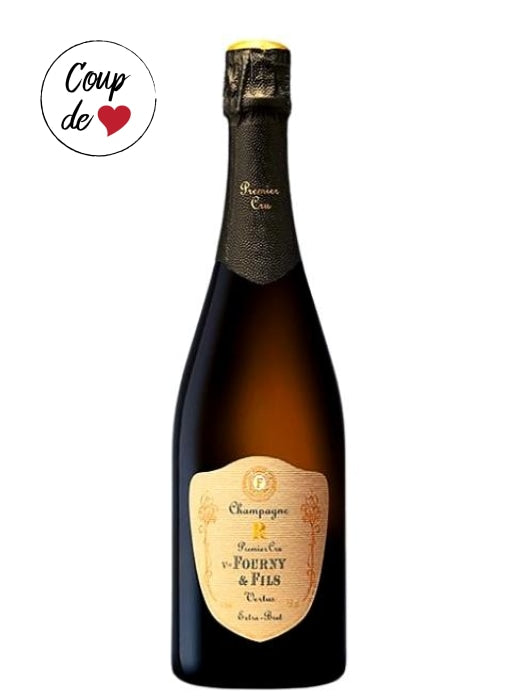Whether you are a wine lover or not, you have most likely heard of Chardonnay. And for good reason, it is the second most planted white grape variety in the world! This noble variety has a strong presence in France in various regions such as Bourgogne, Champagne, Languedoc-Roussillon or even Loire and the Jura, has indeed also been exported in an impressive way since the 20th century.
In this article, we will discover this fabulous grape variety and explore its origins, its taste characteristics, the possible food and wine pairings or still its operating temperature. Follow the guide!
The origins of Chardonnay
The exact origin of a grape variety is always a complex matter. Chardonnay is no exception and although different theories exist, it seems that it has its roots in Burgundy, more precisely in the Mâconnais.The latter would indeed come from a crossing between the varieties pinot noir and gouais blanc made during the 16th century.
Appreciating its taste qualities, the monks would then have disseminated it within various French regions before its success became international in the course of the 20th century.
Today, this is (almost) the only white grape variety planted in Burgundy, a region where it represents almost half of the vineyard. This is followed by the Champagneand Languedoc-Roussillon regions, where Chardonnay is also very present. Other wine-growing areas such as the Loire, Jura, Savoie and even Beaujolais cultivate it.
At an international level, it is particularly present in the United States (which is the world's largest producer), but also in Chile, Argentina, Australia and South Africa.
Be that as it may, its success story no longer suffers from any dispute and Chardonnay is probably the most famous variety in the world!
The taste and aromas of Chardonnay
What makes Chardonnay so captivating is its ability to reflect its surroundings. Indeed, the wines made from this grape variety vary considerably depending on the terroir, the climate or even their vinification and ageing. Moreover, it is most likely its brilliant ability to adapt that allows it to have worldwide influence.
To caricature, one could say that there are two main styles of chardonnay. The first style focuses on the fruity notes of the grape variety. The wine is therefore generally aged in a neutral container (stainless steel tank in particular), without altering its intrinsic aromas. In this case, the cuvées express aromas ranging from white fruits (peach, apricot etc.) with citrus fruits (lemon, grapefruit etc.) through the green apple. However, even within this same style, its expression can vary considerably. For example, one will notice a great aromatic difference between a Chardonnay from Chablis expressing tension and minerality in comparison to a Chardonnay from Languedoc with more ripe and gourmand fruity notes.
The other style of Chardonnay is aged in oak barrels. This style is particularly widespread in Burgundy within appellations such as Chassagne-Montrachet, Pouilly-Fuissé or Meursault. Here, the material on the palate will be heavier and the notes of fruit will mingle greedily with aromas woody, spicy, buttery and brioche from the aging in barrels.
These two styles of wine also exist in Champagnes blanc de blancs (100% chardonnay therefore): on the one hand the chardonnays mineral, fresh and chalky, on the other those aged in barrels, expressing power and aromatic richness.
Of course, many shades exist between these lines, precisely to the delight of wine lovers around the world! Thus, if there are as many Chardonnays as there are wines, you now know the main aromatic axes of this wonderful grape variety.
What to eat with Chardonnay?
You will have understood that Chardonnay, thanks to its superb versatility, can accompany a myriad of dishes according to its profile.
Thus, if it is expressed mainly on simple, mineral and fruity notes, it will go wonderfully with summer salads, seafood (oysters , langoustines, scallops etc.) or even white fish such as cod or sea bream.
Furthermore, while it has a more powerful and woody appearance, some white meats (chicken, pork, etc.) or fish in sauce will then combine deliciously with this one. Of course, these general rules apply equally to sparkling and non-sparkling Chardonnay.
At what temperature should you serve Chardonnay?
Because of the multitude of styles of wine that Chardonnay offers, it will be served at a different temperature depending on its type.
Thus, simpler and lighter wines evolving on the fruit can be served between 8-10°C. powerful and woody wines are ideal when offered between 11-13°C. Indeed, if served too cold, they will not be able to reveal their full aromatic complexity and you will miss out on part of the pleasure!
As for champagnes, a temperature between 6-8°C is ideal for bubbles with light and mineral flavors. For gastronomy champagnes, 8-10°C will be an ideal range to, once again, best reveal all the flavors present.
All you have to do is pour yourself a drink!
What are the best Chardonnays?
Although it is impossible to give an exhaustive list of the best Chardonnays, La Cave Éclairée offers you below a selection of its finest wines and champagnes made from this one. There is something for all tastes and budgets so do not hesitate and be curious.we are sure that you will find what you are looking for in this list!
- Burgundy - Domaine Cheveau - Mâcon-Solutré-Pouilly - On the Mount
- Burgundy - Domaine Jacques Prieur - Meursault - Clos de Mazeray Monopole
- Burgundy - Domaine François Raquillet - Mercurey - La Brigadière
- Burgundy - At the foot of Mont Chauve - Chassagne-Montrachet - In Pimont
- Loire - Domaine Plou & Fils - Crémant de Loire - MDVIII Brut
- Loire - Domaine Plou & Fils - IGP Val de Loire - Authenticus
- Jura - Jérôme Arnoux - Cellier des Tiercelines - Arbois - Chantemerle
- Languedoc-Roussillon - Maison Antech - IGP Pays d'Oc - Chardonnay
- Champagne - Franck Bonville - Brut Grand Cru Blanc de blancs
- Champagne - Veuve Fourny - Cuvée R Blanc de Blancs 1er Cru - Extra Brut
Good tastings and see you soon at La Cave Éclairée!































